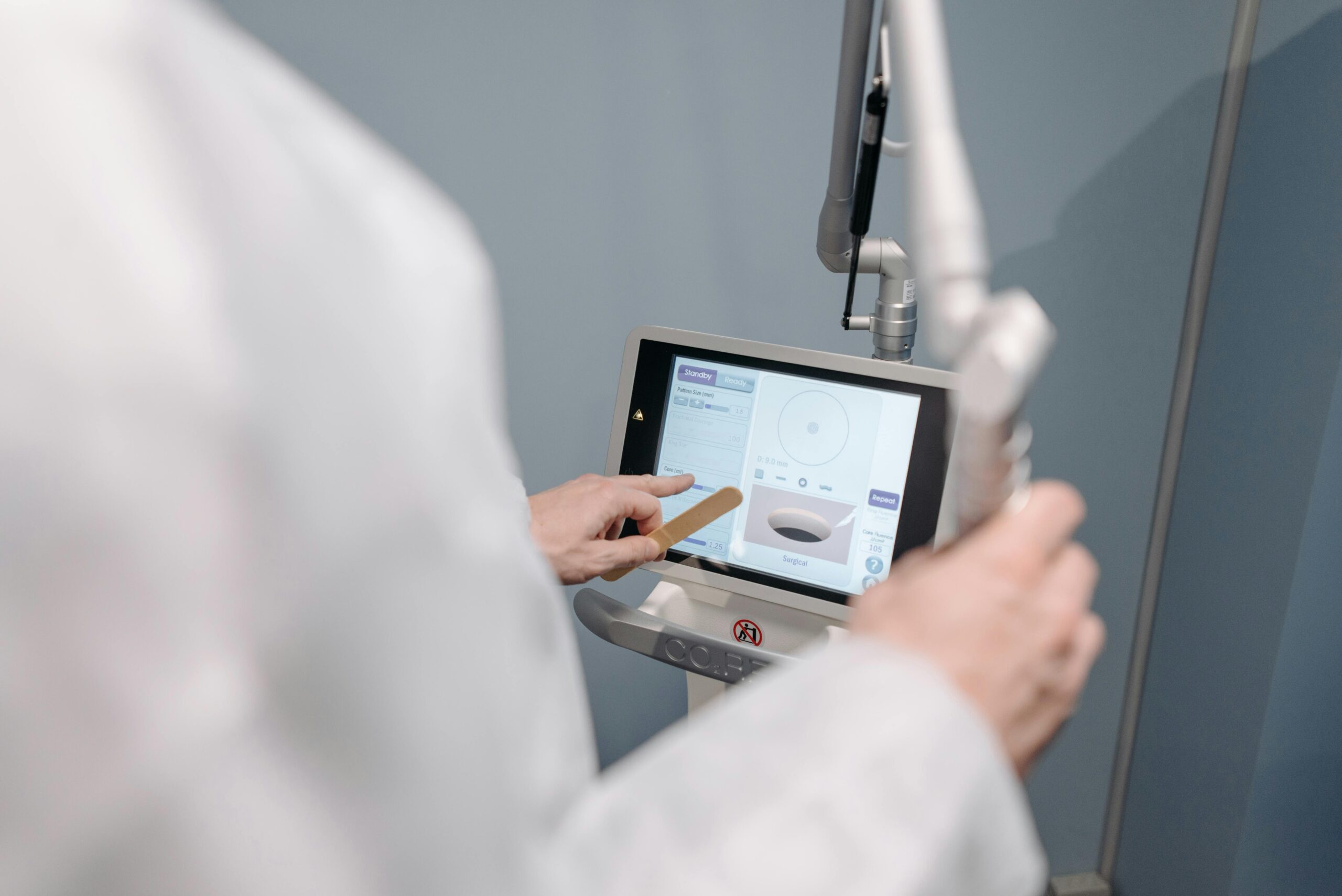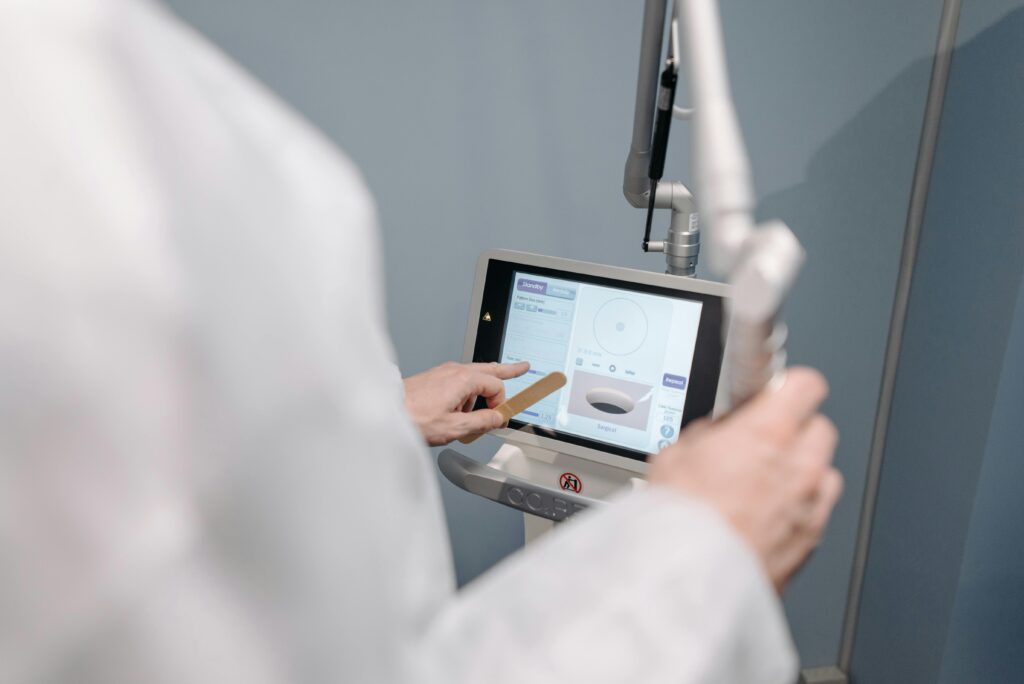
The aesthetic device industry has seen rapid advancements over the past few decades, with innovations constantly pushing the boundaries of what is possible in skincare, body contouring, and overall aesthetic enhancement. However, a new player is set to revolutionize the industry further: artificial intelligence (AI). As AI technology continues to evolve, it promises to make aesthetic devices more user-friendly and capable of delivering highly customized treatments tailored to the unique biometrics of each patient. In this blog, we’ll explore how AI is poised to transform the aesthetic device industry and elevate patient care to unprecedented levels.
1. Enhanced User Experience with AI-Driven Devices
One of the most significant changes AI will bring to the aesthetic device industry is improving the user experience. Many aesthetic procedures require precise operation and fine-tuning of device settings, which can be complex and intimidating for both patients and practitioners. AI-powered devices can simplify this process by offering intuitive interfaces and automated features that reduce the learning curve.
For instance, AI can assist in calibrating devices automatically, adjusting energy levels, and timing treatments based on real-time feedback from the patient’s skin or tissue response. This makes the devices easier to use and reduces the risk of human error, enhancing the overall safety and effectiveness of the treatments.
2. Personalized Treatments with Biometric Integration
AI’s ability to analyze large sets of data quickly and accurately is perhaps its most promising feature in the aesthetic device industry. By integrating biometric data, such as skin type, elasticity, hydration levels, and other individual characteristics, AI can customize treatment settings for each patient. This personalized approach ensures that treatments are not only effective but also safe and suited to the unique needs of the individual.
For example, AI algorithms can assess a patient’s skin condition using imaging technologies and adjust laser settings for hair removal, skin resurfacing, or pigmentation correction based on real-time analysis. This precision minimizes potential side effects, such as burns or hyperpigmentation, which can occur when using standard settings on a diverse range of skin types.
3. Adaptive Technology for Optimal Results
AI’s capacity for real-time learning and adaptation makes it a game-changer for aesthetic treatments. Devices equipped with AI can continuously monitor patient responses and adjust the treatment parameters accordingly. For example, in body contouring procedures, AI can assess the progress of fat reduction or skin tightening and alter the energy delivery to optimize the results without requiring manual intervention from the practitioner.
This adaptive technology not only enhances the effectiveness of the treatment but also improves patient comfort and satisfaction. By dynamically adjusting to the patient’s unique physiology and response to treatment, AI-driven devices can deliver more consistent and predictable outcomes.
4. Data-Driven Insights for Continuous Improvement
AI doesn’t just enhance the treatment process; it also provides valuable data insights that can drive continuous improvement in aesthetic care. Devices with AI capabilities can collect and analyze data from every session, identifying trends and outcomes that can inform future treatments. This data-driven approach allows practitioners to refine their techniques, improve patient care, and stay ahead of industry trends.
Furthermore, AI can help identify the most effective treatments for specific demographics, allowing clinics to offer targeted solutions that align with the unique needs of their patient base. Over time, this will lead to more personalized and effective treatment protocols, boosting patient satisfaction and loyalty.
5. Expanding Accessibility with AI-Powered Home Devices
As AI technology becomes more sophisticated, we can expect a rise in the availability of AI-powered aesthetic devices for home use. These devices will empower patients to manage their skincare and aesthetic goals from the comfort of their homes, with AI providing guidance and real-time adjustments to ensure professional-quality results.
For instance, AI-driven home devices for light therapy, microcurrent treatments, or even laser hair removal can be designed to scan and assess the user’s skin before each session, adjusting the settings to deliver safe and effective treatments. This democratization of aesthetic care will make high-quality treatments more accessible to a broader audience, expanding the market and empowering consumers to take control of their beauty routines.
6. The Future of AI in Aesthetic Medicine
The integration of AI in the aesthetic device industry is not just a trend; it’s a transformation that will redefine patient care and the overall experience of aesthetic treatments. From enhancing device usability to delivering highly personalized and adaptive treatments, AI is poised to set a new standard in the industry.
As we look to the future, the collaboration between AI technology developers, aesthetic practitioners, and device manufacturers will be crucial in realizing the full potential of AI in this field. By embracing these innovations, the aesthetic industry can ensure that treatments are not only effective and safe but also tailored to meet the evolving needs of each patient, paving the way for a new era of personalized aesthetic care.
Conclusion
AI is set to revolutionize the aesthetic device industry by making equipment more user-friendly and capable of customizing treatment settings to meet each patient’s unique biometrics. This innovation will not only improve treatment outcomes but also enhance patient satisfaction and accessibility, bringing the benefits of aesthetic care to a wider audience. As AI technology continues to evolve, its impact on the aesthetic device industry will only grow, ushering in a new era of personalized and effective aesthetic treatments.
Author: Vin Wells
RockBottomLasers.com
800-794-1097

